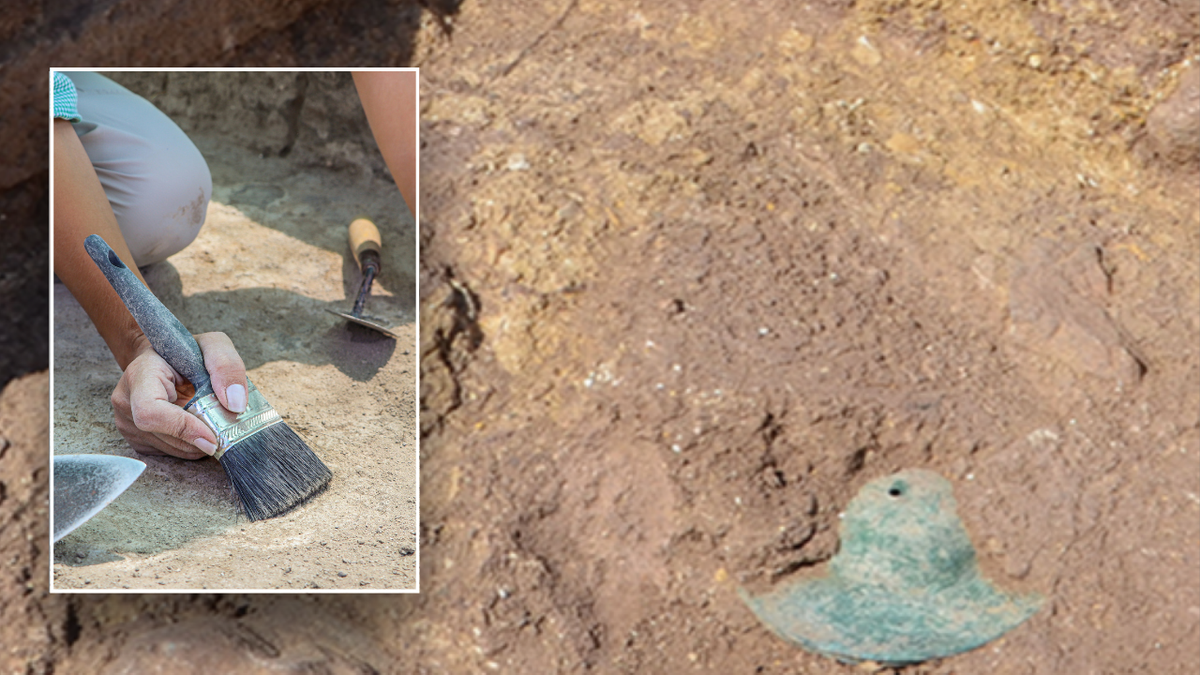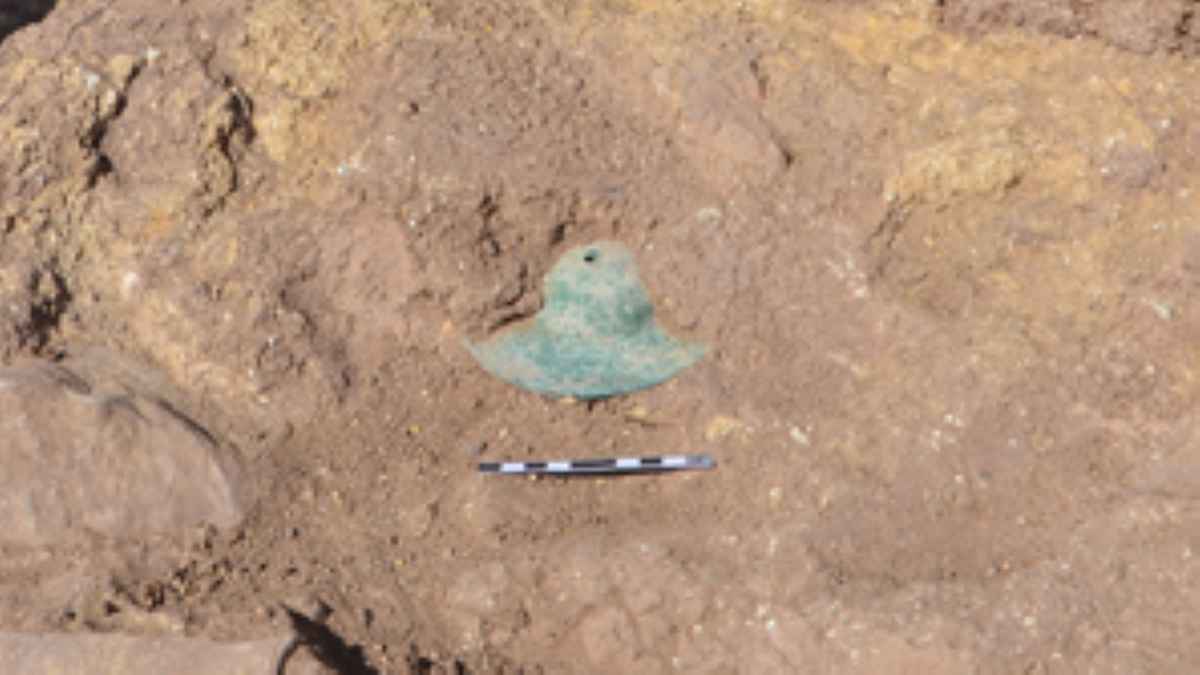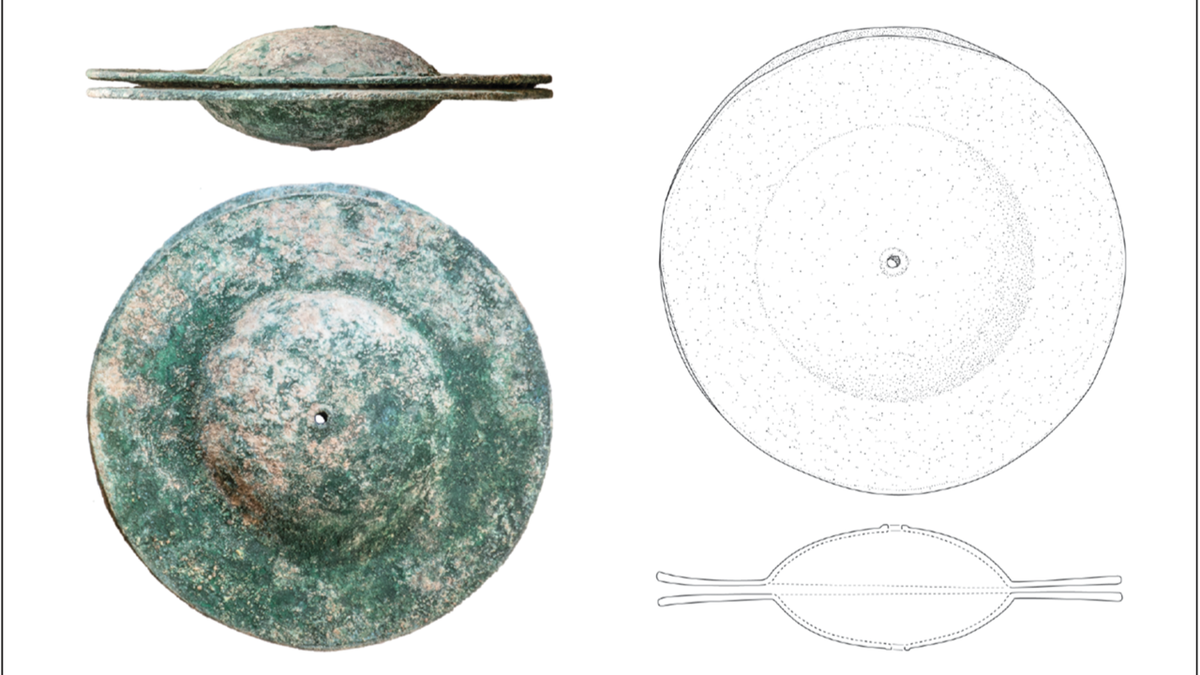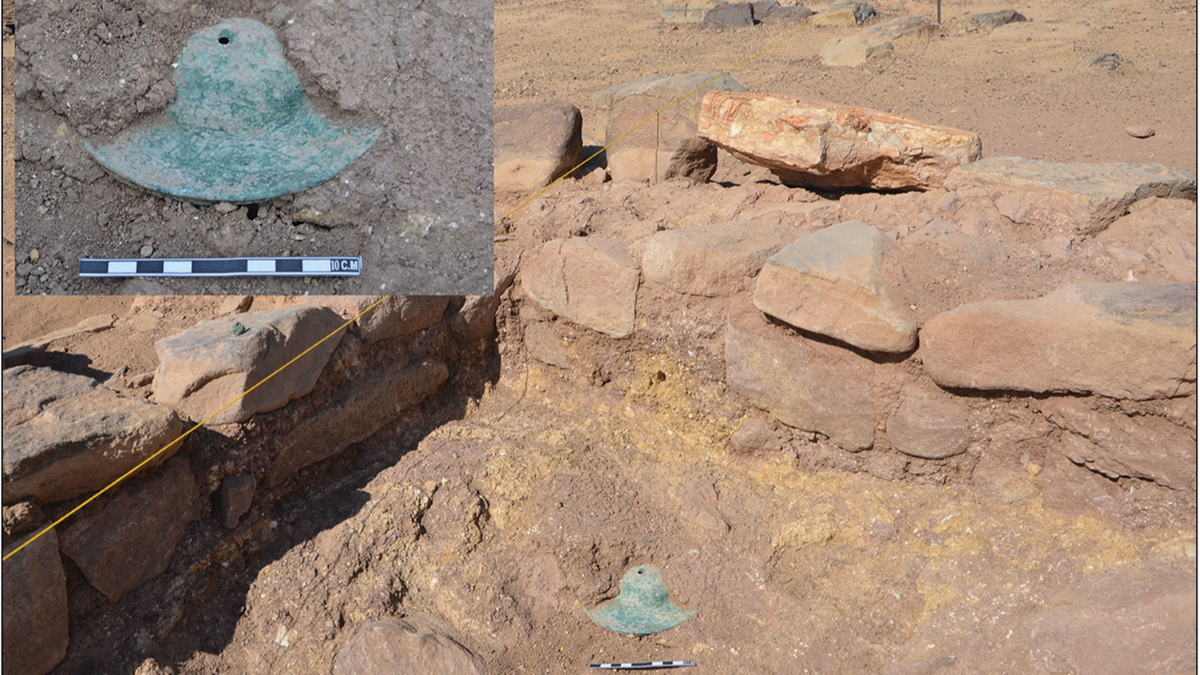
Rare 4,000-year-old musical instrument 'buried in the ground' puzzles archaeologists
By Andrea Margolis
Published April 15, 2025
Archaeologists were perplexed by a strange pair of discs found in Oman – only to discover these items were actually a single 4,000-year-old instrument.
The cymbals date to the third millennium B.C. They were unearthed at a site in modern-day Dahwa, Oman, located on the southeastern edge of the Arabian Peninsula in southwestern Asia.
The scientists released their findings in an article entitled "Bronze Age cymbals from Dahwa: Indus musical traditions in Oman," in the journal Antiquity on April 8.
ANCIENT SETTLEMENT REVEALS REMAINS OF 1,800-YEAR-OLD DOG, BAFFLING EXPERTS: ‘PRESERVED QUITE WELL’
Historians uncovered the cymbals during an excavation of an ancient building in 2018, according to the article. The cymbals date back to somewhere between 2200 B.C. and 2000 B.C.
Pictures show the cymbals as identical in size. Neither appear to have surface damage, which the study's authors said "support[ed] the idea of a deliberate and careful deposition."

Archaeologists found ancient cymbals in Oman. The excavation's findings were recently published. (iStock; Y. Al Rahbi via Antiquity/Cambridge.org)
"Both are circular, with an outer diameter of 138mm and an embossed middle (17mm deep and 76mm in diameter) that is perforated by a 4.2mm-diameter hole," the journal article says.
"The walls of the cymbals are thin, with a thickness of 1.5–2mm that increases slightly at the edges where it reaches 3mm."
ARCHAEOLOGISTS DISCOVER LONG-LOST TOMB OF UNKNOWN PHARAOH IN EGYPT
Though well-preserved, the cymbals also experienced some degradation over the millennia.
The greenish surface of the cymbals suggests copper oxidation, and archaeologists noted that they became "corroded together."
"Over the millennia of being buried in the ground, the cymbals became corroded together," the study said. "When trying to separate the pair, two small fragments detached from one of the sides; one of these was submitted for chemical analysis using portable x-ray fluorescence."

The cymbals may have been used in ancient rituals. (Antiquity/Cambridge.org)
The authors added that general knowledge about ancient musical instruments is hindered by "poor preservation of perishable materials and the relative rarity of durable examples."
The only ancient musical instruments that still survive tend to be made of metal or bone.
"These cymbals are the first of their kind to have been found in good archaeological contexts."
"Copper-alloy cymbals are among the relatively rare musical instruments recovered from Bronze Age contexts in the Near East," the study said.
"These percussive instruments are found from as early as the third millennium BC in Mesopotamia and the Indus Valley, with Levantine examples appearing from the second millennium BC onward."

A diagram shows copper oxidation on the surface of the cymbals. (Antiquity/Cambridge.org)
But the slight degradation of the artifacts did not hamper the experts' excitement. Speaking to Archaeology magazine, the study's author, Khaled Douglas, described the cymbals as unique.
"These cymbals are the first of their kind to have been found in good archaeological contexts in Oman and are from a particularly early context that questions some of the assumptions [about] their origin and development," the archaeologist said.
CLICK HERE TO SIGN UP FOR OUR LIFESTYLE NEWSLETTER
Historians believe the cymbals were used in rituals, such as during temple construction.
But the study cautions that not much information is available at this point.

The cymbals are roughly 4,000 years old, though they may date back as early as 4,200 years. (Y. Al Rahbi via Antiquity/Cambridge.org)
"Across the wider Near East, cymbals are consistently associated with ritual activity," the study said.
"[P]ending further studies, it is hypothesized that the Dahwa cymbals represent a similar connection between cult, music and dancing."
For more Lifestyle articles, visit foxnews.com/lifestyle
Archaeologists plan to continue studying the artifacts in order to determine how they were used in social contexts.
"From their inception, cymbals appear to have been tied to ritual activity and temple settings and the discovery of the pair at Dahwa … suggests that music and musical instruments were important cultural components of inter-regional contact and co-operation around the Arabian Gulf," the journal article concludes.
CLICK HERE TO GET THE FOX NEWS APP
"The potentially multifaceted role of music in the social and ritual lives of Bronze Age communities remains a question for future research."
http://bahce.site/travel/rare-4000-year-old-musical-instrument-buried-ground-puzzles-archaeologists
